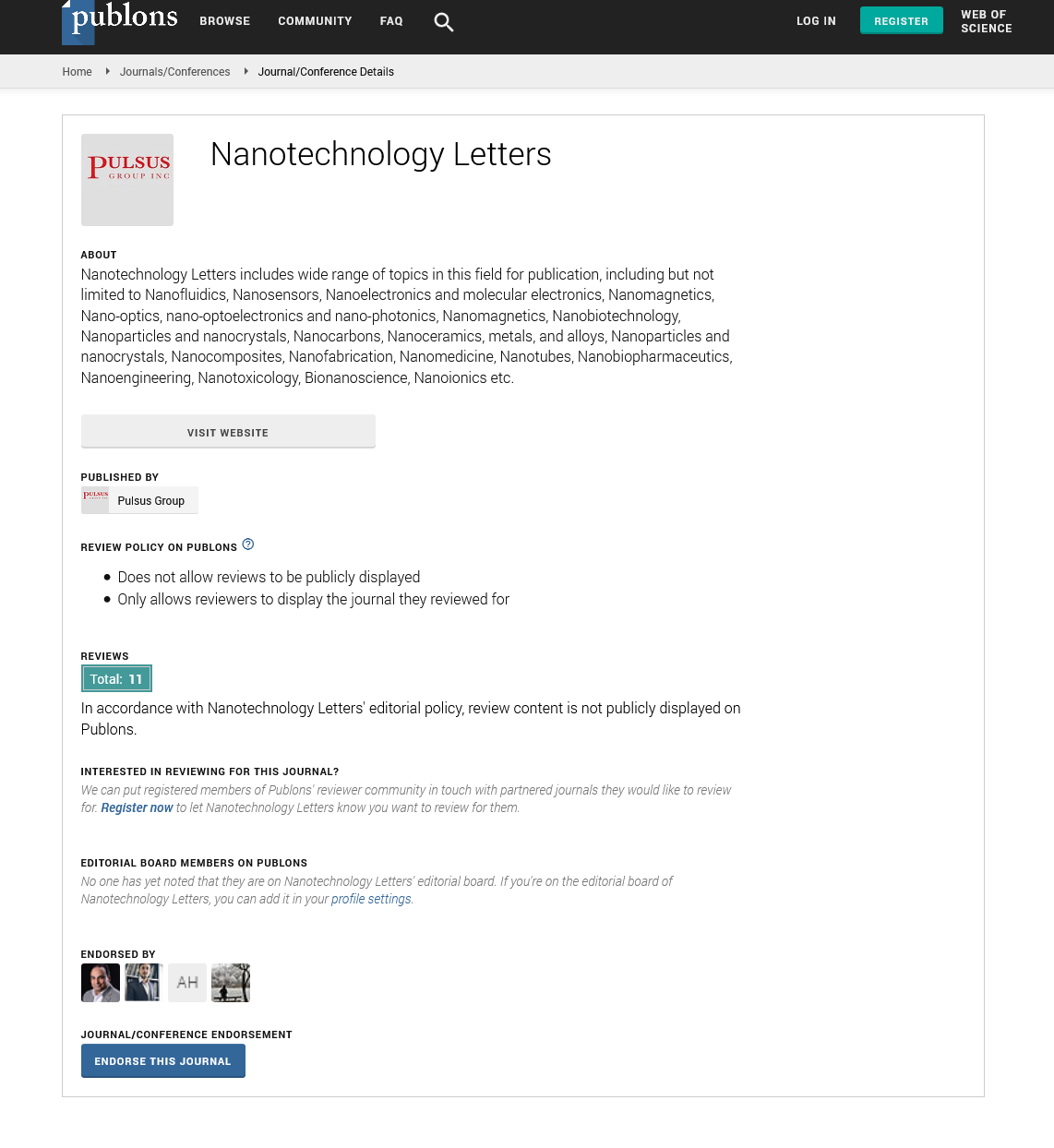Nano carbons
Received: 07-Sep-2021 Accepted Date: Sep 21, 2021; Published: 28-Sep-2021
Citation: E Moulton S. Nano carbons. Nanotechnology Letters. 2021;6(1):4.
This open-access article is distributed under the terms of the Creative Commons Attribution Non-Commercial License (CC BY-NC) (http://creativecommons.org/licenses/by-nc/4.0/), which permits reuse, distribution and reproduction of the article, provided that the original work is properly cited and the reuse is restricted to noncommercial purposes. For commercial reuse, contact reprints@pulsus.com
Description
Carbon nanotubes are cylindrical molecules that contains rolled-up sheets of single-layer carbon atoms are also called graphene. Carbon nanotubes are often single-walled Carbon nanotubes with a diameter of but 1 nanometre (nm) or multi-walled Carbon nanotubes consisting of several concentrically interlinked nanotubes, with diameters reaching more than 100 nm. Their length can reach several micrometres or millimetres. Carbon allotropes is that the fourth-most-abundant element within the universe and, counting on the arrangements of carbon atoms, takes on a good sort of forms, called allotropes and these exhibit unique properties of strength and electrical conductivity. Electrical properties of carbon nanotubes are of rolling-up direction with graphene layers which determines the electrical properties of the nanotubes.
Properties of carbon nanotubes: Apart from their electrical properties, which they inherit from graphene, carbon nanotubes also have mechanical properties that help for the development of new materials: their mechanical tensile strength can be 400 times that of steel; they're very light-weight and their density is one sixth of that of steel; their thermal conductivity is best than that of diamond and that they have a really high ratio greater than 1000. All these properties make carbon nanotubes ideal candidates for electronic devices, transistors, electron field emitters, hydrogen storage cells, chemical/electrochemical and biosensors ,cathode ray tubes lithium-ion batteries, white light sources, electrostatic discharge and electrical-shielding applications. Carbon nanotubes are made up of three main methods discharge, laser ablation of graphite, and chemical vapour deposition .In the discharge and laser ablation of graphite graphite is combusted electrically and therefore the carbon nano tubes developing within the gaseous phase are separated. All three methods require the use of metals like iron, cobalt, and nickel as catalysts. Chemical vapour deposition manufacturers can combine a metal catalyst like iron with carbon-containing reaction gases like hydrogen or carbon monoxide to form carbon nanotubes on the catalyst inside a high-temperature furnace.
Carbon nano tubes are mainly used as additives to synthetics. Carbon nano tubes are commercially available as a powder. Carbon nano tubes unfold their particular properties to be untangled and spread evenly within the substrate. Another requirement for Carbon nano tubes is to be chemically bonded with the substrate for e.g. a plastic material and the Carbon nanotubes can also be spun into fibres. Carbon nanotube enabled nanocomposites have received much attention as a highly attractive alternative to plain composite materials because of their mechanical, electrical, thermal, barrier and chemical properties like electrical conductivity, increased lastingness , improved heat deflection temperature, or flame retardancy. These composite materials already find use in sporting goods, yachting, textiles, automotive, aeronautics and space, industrial engineering and electrostatic charge protection. Carbon nano tubes are used as catalysts in many relevant chemical processes, however, controlling their catalytic activity isn't easy. Nano inks formulations supported Carbon nanotubes dispersions are attractive for printed electronics applications like light-emitting devices, thin-film transistors, rfid tags and the nano transparent electrodes. Carbon nanotubes even are used to demonstrate protective textiles with ultra-breathable membranes. These membranes provide rates of water vapour transport that surpass those of economic breathable fabrics like Gore-Tex; albeit the CNT pores are only a couple of nanometers wide.






